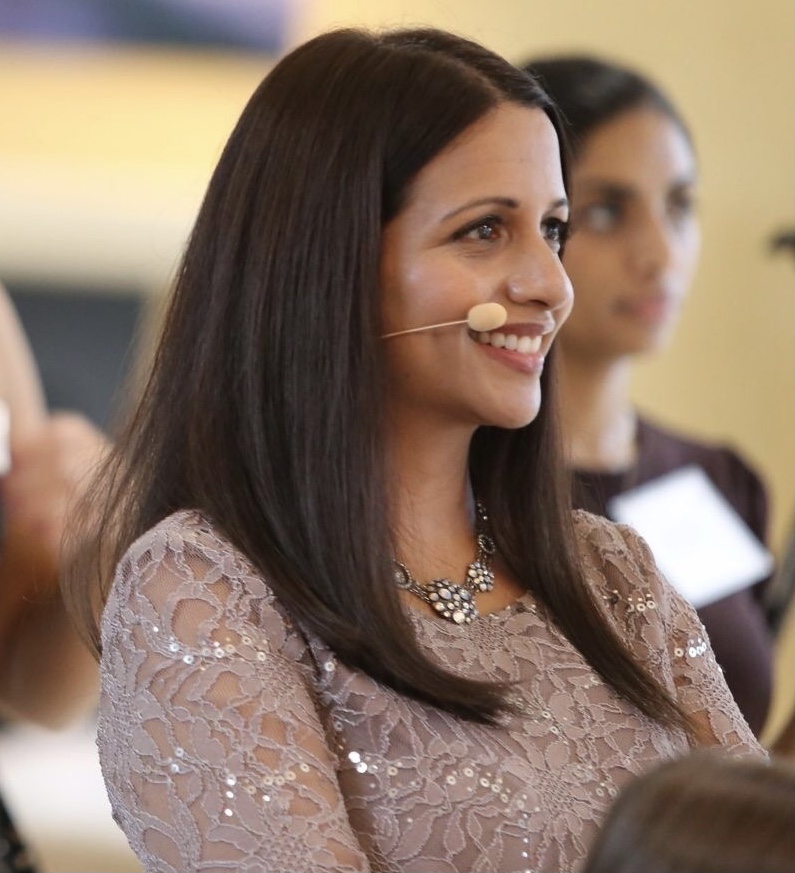By Rachana Bhide

Recently I caught up with a male colleague, Andrew, whom I respect tremendously. He had been my coach for a business innovation program several years ago. He was in New York for a conference and reached out to catch up.
We met for coffee after nearly 3 years. Our initial plesantries while we waited at the counter went something like this:
ME: “What are you up to while in New York?”
HIM: “My girlfriend is coming tomorrow.”
ME: “Nice! What will you do?”
HIM: “Actually, I have to tell you this. On our first date, I showed her your website (The Corner of the Court Project). We were talking about current events in women’s issues, and she had some strong opinions about things.”
ME: “Yeah?”
HIM: “It got a little tense.”
ME: “I can imagine.”
HIM, CONTINUING: “I pulled out my phone and showed her your project. It changed the tone of our entire conversation. We’ve been together for over a year.”
ME: Speechless, heart swelling with gratitude, amazed, shocked.
****
I’ll get back to this story in a bit.
Now that The Corner of the Court Projecthas been live for 2 years, I’ve gotten in a groove with some things.
I focus a lot of my efforts on the storytelling — finding amazing women, interviewing them, sharing their career stories, highlighting how men can play a positive role as allies.
And as creator and facilitator, I am constantly checking in to assess how we are doing. Here’s how I usually break it down:
Level 1: Operational
- Which platforms are the best performing?
- What metrics are we seeing for posts, articles, and shares?
Level 2: Content
- What are good behaviors of male allies?
- Which relationships (bosses? husbands? mentors?) are our women writing about?
** Level 3: Human
- Let’s be real… what are people really feeling right now?
- What are folks afraid of?
- Where do people see optimism, joy, and hope?
** Level 4: Scary In-Your-Face Existential
- Am I really making any impact?
So What Do We Focus On?
It’s easy — and operationally sound — to focus on Level 1 and Level 2: Getting the message out there with maximum scale, reach and quality.
But in my 19+ years as a change management professional, I know in my gut that real change happens slowly and intentionally, when we deeply reflect, persist, iterate, and commit to **Level 3 and **Level 4.
So I want to share some of those deeper, human and existential insights, sparked by my conversation with Andrew and many other men and women in recent months. These are some of my empathy-drivenobservations:
Human insight #1: Men are humble
Yes! Can you believe it?
There has been a lot of well-documented and validated research to the opposite — that when applying for a job, for example, men are overconfident in their abilities.
So it’s kind of interesting to share that I’ve witnessed the opposite when our stories come out.
Women from our program report to me, time and again, that when their stories are shared their male champion was “speechless” and “humbled” to know he had made an impact. Often he is even hesitant to acknowledge his role — to him, he was just doing something he felt was normal and right.
It’s a core principle of our program design. We leverage women’s voices to share positive stories for the following reasons:
- Success stories are convincing
- Women’s voices carry a tremendous amount of influence and inspiration
- Men don’t need to toot their own horns — and around this topic, the typical mandoesn’t consider himself a feminist; or if he does, he prefers not to virtue signal
One of my male colleagues in my network — a real champion for positive psychology in leadership — penned an article about an inspirational woman in his field. He shared with me offline. He was inspired in particular by the sales career of one of the women in our stories, and didn’t want to hijack my post by sharing his own article. So I wanted to share it here, to show a great example of the spirit of our project. (Thank you, Jeff, for this authentic article!)
Human insight #2: Our men represent relationships, not metrics
I had to break through a lot of barriers to do the research about men as inclusive, empathetic leaders.
In 2015, just four years ago, companies were skeptical when I suggested we bring men into diversity discussions by acknowledging their whole selves as fathers, husbands, bosses, etc.
“Rachana, men don’t talk about feelings,” I was told. Or, “Why does it matter if a man is a father?” Or the oft-replied, “I just don’t get it.”
I felt the hesitation, so my research really took a frontline, tactical approach: What can we do to train and enable men to be good champions for women? The psychology and culture around this, I decided, would have to be more gradual and require some patience.
It wasn’t long though, that I realized a way to engage men was exactly what I had sensed all along: Men were already doing good things as allies for the women in their lives, at work, at home, and socially.
Women had clear examples they were not only excited to share, they were emotionally invested in the positive impact a male ally had made. I knew there was no platform or outlet to show these stories, but I hadn’t ever realized it was necessary.
Here is the insight: Companies are increasingly investing in male allies training, programs and practical strategies for increasing gender equality. There are a lot of incredible humans doing that work full-time, designing systems and leading the conversation for boards and corporations.
Our approach is actually quite different, yet complements this corporate agenda. We spark conversation by allowing natural relationships to surface as examples for positive change.
Leading with the principle that our men are human, whole and capable allies,we invite men into the discussion in a modern and collaborative way.
Human insight #3: Women show up as multipliers for change
Want to know what happens when you engage women in supporting women? 1+1 equals 10.
Something really cool has been happening as I’ve been sharing women’s stories on the site: These women connect me with other great women, whose stories I can also tell. And those women meet other women who shared stories on our website, and collaborate together on projects. Each connection builds an ecosystem of positivity.
These women fuel each other’s visions, including my own.
It’s really freaking cool.
People sometimes ask me, “Why are you focused only on men and women? Why don’t you talk about the importance of women helping women?” It’s a great question. And of course the first answer is, my research topic wasn’t about that.
But the insight I’ve gotten is that even when it’s not deliberate… women find each other.They build networks, exchange heaps of positive energy, and emerge as champions for one another in tremendous ways.
Some quotes from my inbox:
“Love what you are doing!”
“It’s been a crazy hustle but I love every minute of it!”
“You have to meet (entrepreneur, leader, social change maker, etc.) She’s amazing!”
So at the end of each day, I truly get to witness and experience men helping women (the stories), women helping men (sharing the stories) and women helping women (the power of the network!)
I hope that’s a “win-win-win”!
Finally, the yikes-existential-keep-me-up-at-night insight: Are we making anyimpact?
Our approach is rooted in winning hearts first, then minds. There’s a real gift to being a social researcher, being able to put a project out that celebrates human relationships, with the hope that stories can positively impact business outcomes. But change happens slowly and is often hard to measure.
I hope if Andrew’s example is a small indicator of the impact of our voice, that perhaps we are on the right track.
Learn more about The Corner of the Court Project with Oracle’s SmarterCX in this video.
View all our women’s stories at our dedicated website.
View the original article on LinkedIn.
